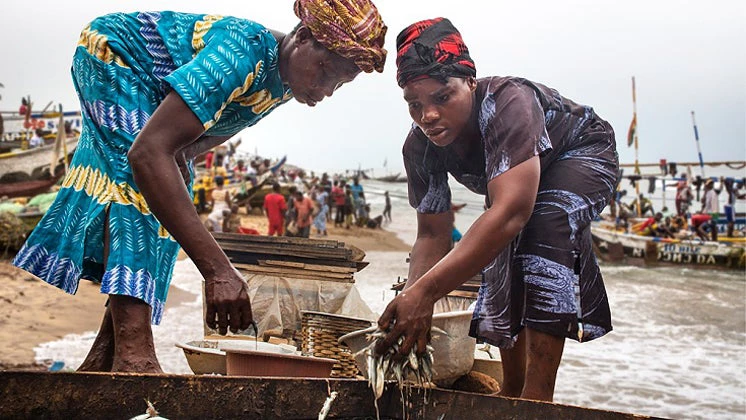
Over the last 20 years, economic growth has helped to lift almost a billion people out of extreme poverty. But 1 billion people are still extremely poor. 1.1 billion live without electricity and 2.5 billion people without access to sanitation. For them, growth has not been inclusive enough.
In addition, growth has come at the expense of the environment. While environmental degradation affects everyone, the poor are more vulnerable to violent weather, floods, and a changing climate.
Development experts, policymakers, and institutions like the World Bank have learned a major lesson: If we want to succeed in ending poverty, growth needs to be inclusive and sustainable.
Three areas are critical to achieve this: access to energy, responsible resource management, and good governance.
First, people need access to energy to leave poverty behind. But the energy sector also has a very high potential for reducing poverty while making “green” gains.
However, the electricity challenge remains daunting. In Ethiopia, with a population of 91 million people, 68 million are living in the dark. Without electricity children cannot do homework at night, people cannot run competitive businesses, and countries cannot power their economies.
This is why access to sustainable energy is a development goal in itself. According to the latest data, more poor people are gaining access to electricity at a faster rate than ever before. But the gains in renewables and progress in efficiency are too slow. Almost 3 billion still cook with polluting fuels like kerosene, charcoal and dung.
The second critical area for a sustainable and inclusive growth shift is responsible resource management.
The fishery sector, for example, holds many opportunities for smart and sustainable resource management.
A well-managed “blue” economy can ensure food security, promote sustainable tourism, and build resilience. Ineffective fish-stock management and illegal fishing waste $75 billion to $125 billion of global output annually, undermining food security and forgoing revenue.
Indonesia has more than 2.6 million fishermen. It is the world’s second-largest producer of wild-capture fish.
If it improves governance of the fisheries sector and invests in large scale maritime transport and trade infrastructure, it can double fish production by the year 2019.
Governance is the third area which needs urgent attention. For many countries, this is the biggest challenge.
Estimates suggest that illegal logging generates approximately $10 billion to $15 billion annually worldwide.
This is a problem of implementing existing regulations or designing better laws. And it is a global issue, rife in many resource-rich countries.
Improving transparency and monitoring is key. Government agencies often don’t know the extent to which sectors are sustainable and which natural resources are being depleted.
The energy sector, for example, needs more and better data on simple energy use and emissions. This comprehensive “green accounting” is currently lacking.
But it is also a matter of leadership, building consensus, taking on vested interests and juggling trade-offs to make the shift from ‘dirty’ and exclusive to sustainable and inclusive growth.
So how can we overcome the obstacles to making growth sustainable and inclusive?
There are many who fear that greening growth is too expensive, could slow output, or should concern only high-income countries. This fear is short-sighted. Sustainable growth is neither unaffordable nor is it technically out of reach.
But it comes with challenges, including large up-front costs and long-term financing of 15 to 25 years. Few developing countries have suitable capital markets or banking sectors.
Improving the energy mix, for example, will reduce both environmental and fiscal risks. Turkey drastically reduced the share of oil in favor of gas. Thailand has decreased its dependency on petroleum products, from two-thirds to a third.
Another challenge is cost recovery and the right policy environment that ensures we are not only building schools, but also improve education. No power station is of use if the utility company is operating at a massive loss. Few infrastructure projects can charge at full cost. So we should find ways to ease cost recovery, while keeping services affordable for low-income families and communities.
We need to use our opportunities wisely. From 2011 to 2012, investments in clean technology in developing countries increased by 19%. And 90% of clean technology businesses increased their revenue even during the global economic downturn.
China has grown by double digits for decades, but lost a staggering 9% of its expected GDP to “brown growth.” In response, China is shifting economic activity to innovation and higher value-added production.
East Asia could take the lead on green development. Cambodia and Vietnam have integrated green growth plans into economic policies. Thailand’s most recent multi-year development plan includes a goal to reduce energy intensity by 25% by the year 2030.
Others can learn from these experiences. The good news is that more and more countries, developed and developing countries, now understand that their success will depend on how they will grow, not just by how much.
This blog is based on a speech delivered in June 2015.


Join the Conversation